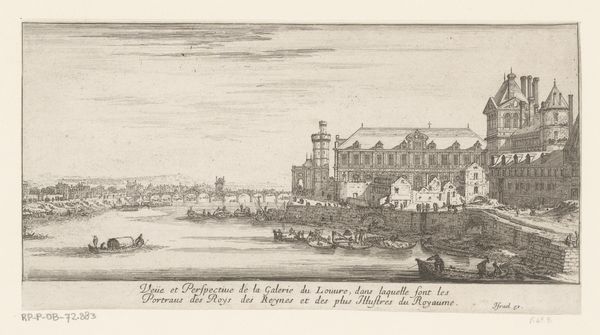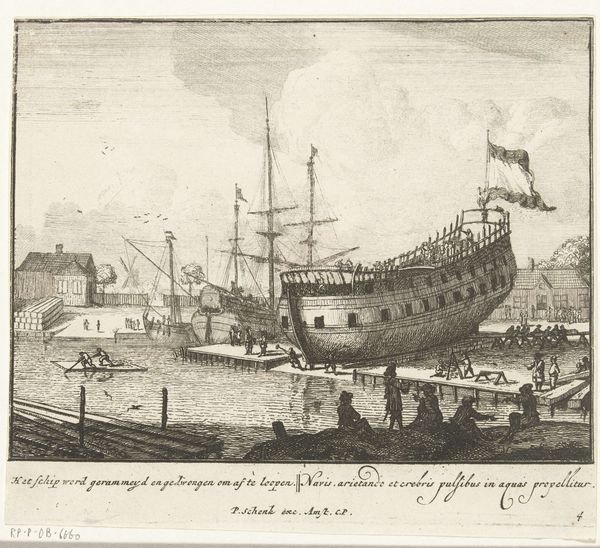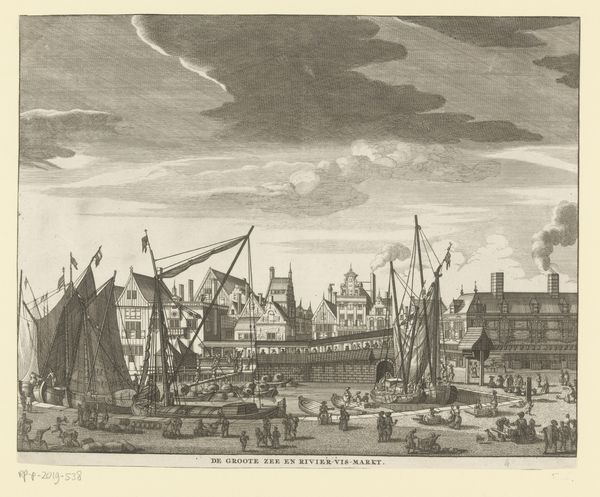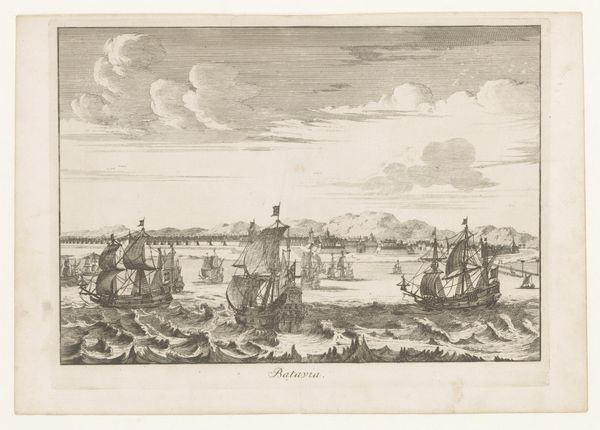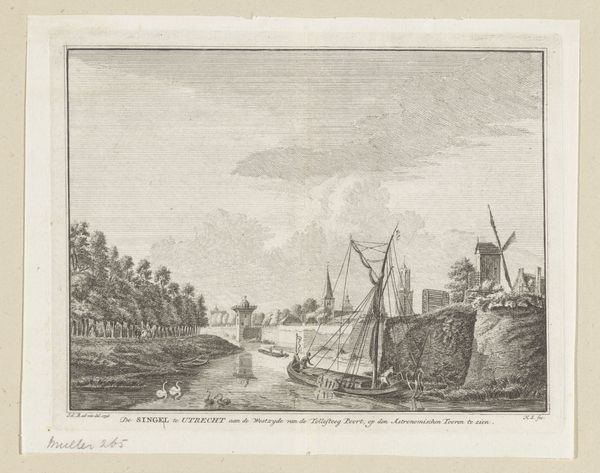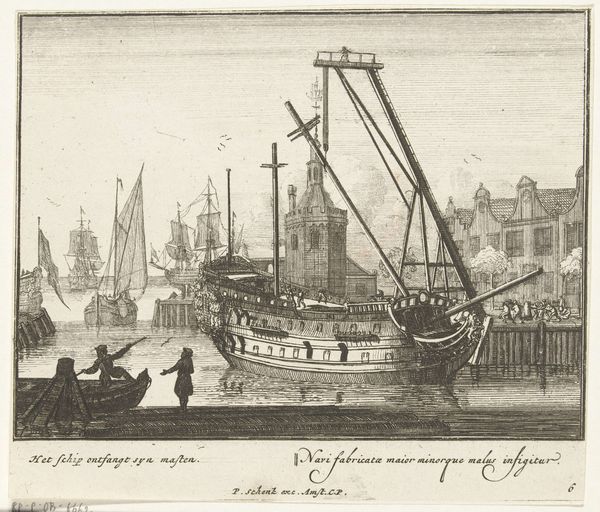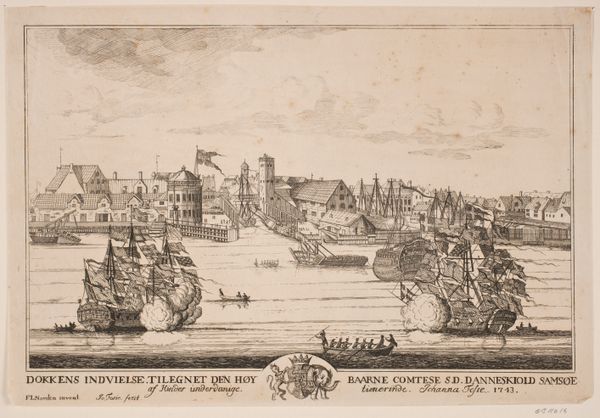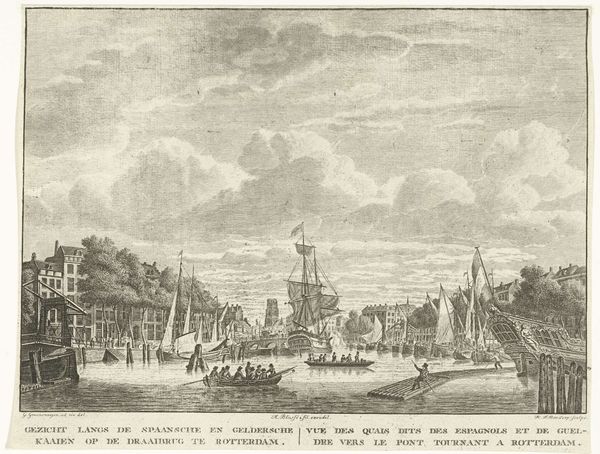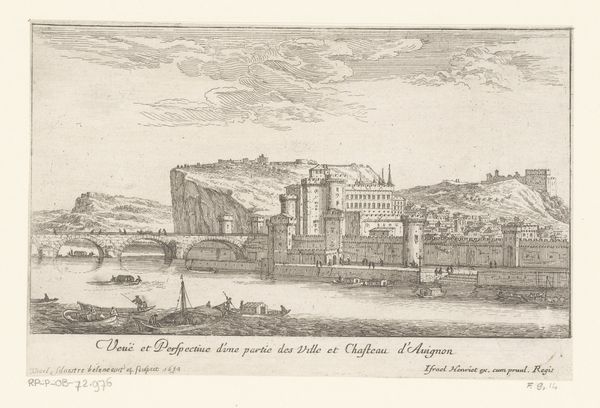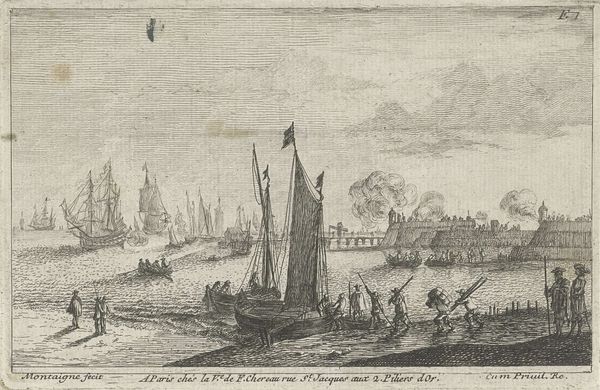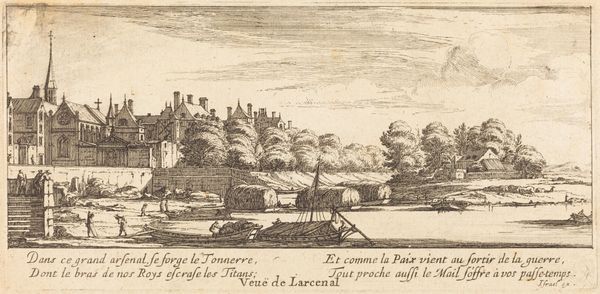
print, etching, engraving
#
baroque
# print
#
etching
#
landscape
#
cityscape
#
engraving
Dimensions: height 117 mm, width 202 mm
Copyright: Rijks Museum: Open Domain
Curator: What strikes me first about this etching is how bustling and alive the city seems. Editor: And I find the contrast between the monumental architecture and the small, seemingly inconsequential, boats truly compelling. We're looking at "View of the Old Castle of Rouen," an etching and engraving by Israel Silvestre, dating back to around 1657, currently residing at the Rijksmuseum. Curator: Yes, it’s like the city is breathing through this river. The fortifications loom, solid and permanent, but all the action is at the river’s edge—that is what lends the print this marvelous tension between solidity and fluidity, stasis and kinesis, I think. And I adore all the small figures dotting the boats. Each tiny person tells a story that we're not quite able to grasp! Editor: Exactly! Silvestre positions us, the viewers, at a calculated distance, perhaps inviting questions regarding power, social class, and the very notion of spectatorship in the Baroque era. These citizens navigating the river and docked beside these massive, regal fortifications prompt considerations about what their lives were, who profited from their labor. And you have a lovely, slightly dreamlike skyline to make you consider mortality in face of passing time. Curator: That distance creates a sense of being both present and detached, as if observing a stage. Which really pulls you into the theatricality typical of the Baroque! Also, and I can't quite explain why, the shades of grey make me feel melancholic about the passage of time... This piece manages to capture not only the physical reality of Rouen, but also some very poignant emotions that transcend time, which is an admirable trick to achieve, no? Editor: Yes. And thinking about this artwork as a 'print' – an easily reproducible medium, suggests a broader distribution, further embedding particular perspectives of power into the everyday. Was the piece created to evoke pride, indifference, resistance, resignation...? Curator: It is a wonderful thing, that art can stir all of those questions, centuries after its creation. Thank you for reminding me of the potential inherent to this tiny world captured on paper. Editor: Likewise! By intertwining form with a tangible socio-historical context, artworks can act as incredible bridges connecting our experiences.
Comments
No comments
Be the first to comment and join the conversation on the ultimate creative platform.
